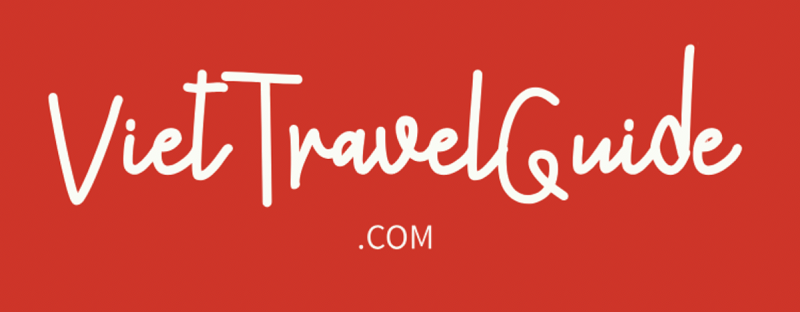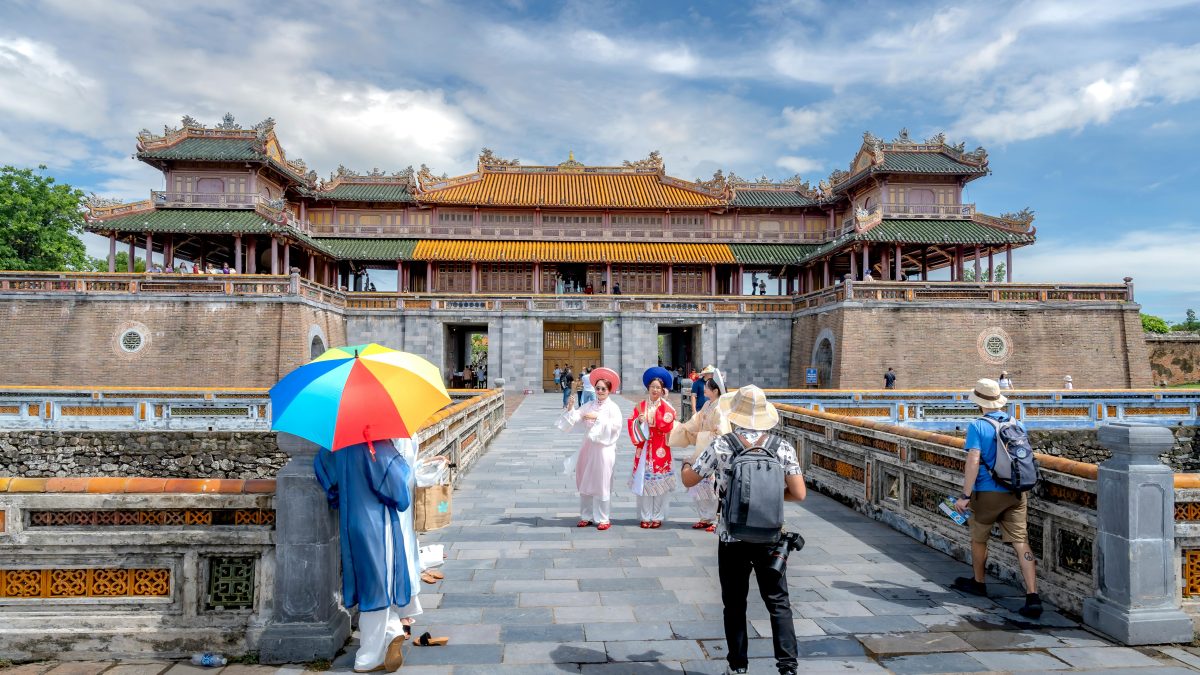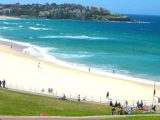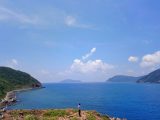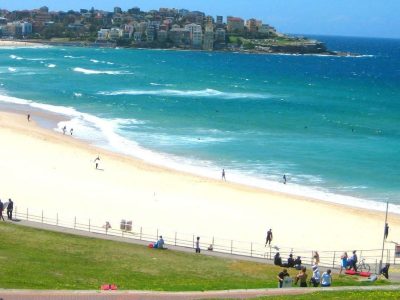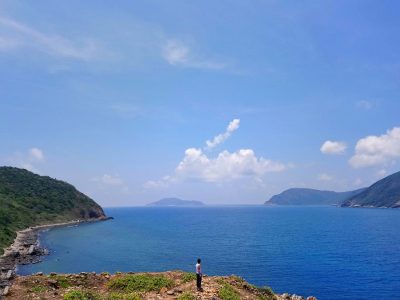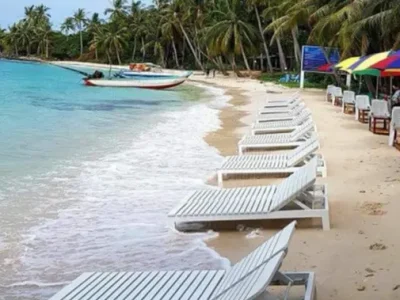In this in-depth article, VietTravelGuide.com will share with you the best times to visit to Vietnam. Before you start planning your trip, read on and mark down the times that work best for you.
Vietnam stretches over 1,600 km, making it a spectacularly slender country with a width of only about 50 km at its narrowest point. Each region has its own unique beauty and climate, meaning you need to carefully consider the time to travel based on your desired itinerary.
Because climate change occurs from North to South, no matter what time of year you travel to Vietnam, there will always be a place worth visiting
Below are the main tourist seasons in Vietnam. When do you plan to travel to Vietnam? Please save the information below.
- Peak season:
North: September to November, March and April.
Central: April to August.
South: October to April. - Intermediate season:
North: December to February, April to August.
Central: September to March.
South: September to December. - Low season:
North: May to October.
Central: September to May.
South: May to September.
What time to travel Vietnam to enjoy the best weather?
Vietnam has a tropical climate, ready to welcome visitors all year round. No matter when you come to Vietnam, you will always find a place with favorable weather.
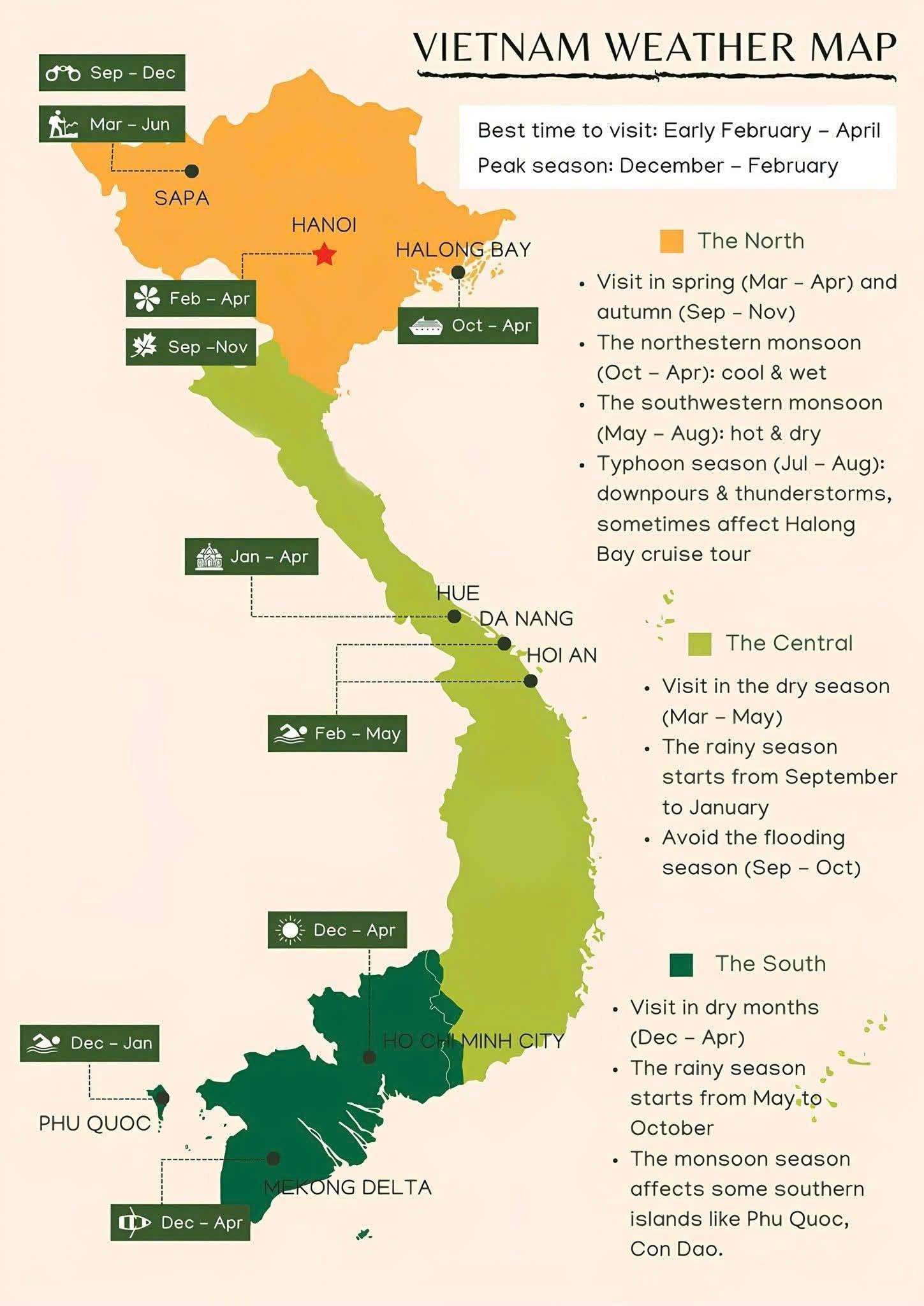
If you want to explore Hanoi, Ho Chi Minh City and other tourist destinations on the S-shaped strip of land, the dry season is the most ideal choice. February and March are two great months to experience traveling across Vietnam from North to South with relatively dry weather.
However, Vietnam’s Lunar New Year usually falls around this time and can last up to 10 days. During Tet, most of the main tourist attractions in the cities are closed because everyone is at home with their families. Our advice is that you should travel to the beach during this time and spend time visiting the big cities before or after Tet.
To enjoy the dry and cool weather in Sa Pa or Hanoi in the North, you can choose to travel from September to November, or March and April. For sunny beach tourism in Hoi An or Nha Trang in the Central region, the ideal time is from April to August. Meanwhile, the Mekong Delta and Phu Quoc Island in the South are warmest from October to April.
When is the cheapest time to travel Vietnam?
Vietnam is known for being an affordable travel destination all year round. You can easily find delicious, reasonably priced street food and comfortable hotels to suit any budget.
To get the best deals on flights and accommodation, consider travelling outside of peak season. April, May, October and November are great times to visit, as the weather is still warm throughout the country but there will be significantly fewer tourists, allowing you to fully enjoy your trip.
When to travel to Vietnam to avoid the crowds?
Vietnam has different peak tourist seasons depending on the region, so you can always find a quieter place, away from the hustle and bustle of crowded beaches or cruise ships. The rainy season usually attracts fewer tourists. It lasts from May to October in the North, from September to May in the Central region and from May to September in the South.
Traveling during this time has many advantages. You can save money on accommodation and transportation. Popular restaurants and tours will also be less crowded, providing a great opportunity for you to immerse yourself in the local culture, such as enjoying a bowl of bun cha on a plastic stool on the sidewalk.
However, sudden rains and gloomy weather can disrupt your plans for hiking in Sa Pa or cruising in Ha Long Bay. Therefore, you need to be more prepared when choosing at this time.
When not to visit Vietnam?
Although Vietnam’s diverse climate makes it possible to visit at any time, you may want to consider avoiding Vietnam during the rainy season.
When the monsoons arrive, the rains are often intense, long and very humid. So we suggest visiting the city during the rainy season, where you can still visit ancient museums and temples between showers. Avoid the mountainous Sa Pa and Ha Giang regions and definitely avoid booking a cruise on Ha Long Bay. Storms will occur and boats will have to anchor.
If you do decide to travel during the rainy season, it’s best to be flexible in your plans. Consider not booking everything in advance due to unpredictable weather. Also, keep in mind that keeping an open mind can help you take advantage of low season discounts.
Tet Nguyen Dan, which marks the Vietnamese Lunar New Year, is another time to keep in mind when travelling, as many landmarks and shops will be closed for a week or more to celebrate. Tet usually falls in late January or early February.
Where to travel in January?
January, the beginning of the new year, is a great opportunity to explore Vietnam from North to South with diverse climates and cultures.
Below are suggestions for specific tourist destinations in each region in January, suitable for activities such as visiting the sea, exploring mountains or experiencing local culture.
Northern Vietnam tourist destinations in January:
– Hanoi: Participate in the flower festival at West Lake, an annual event that attracts a large number of tourists.
– Sa Pa: Experience trekking through the villages of the H’Mong and Dao people, and enjoy the snowfall if you are lucky.
– Ha Giang: Cycle through Ma Pi Leng pass, admire the brilliant yellow canola flower fields and majestic mountain scenery.
Central Vietnam travel destinations in January:
– Hue: Explore the ancient capital of Hue with historical sites such as the Imperial City, the mausoleums and Thien Mu Pagoda.
– Da Nang: Swim at My Khe Beach, one of the most beautiful beaches in Vietnam, and visit the Marble Mountains.
– Hoi An: Stroll around Hoi An ancient town in the evening, watch the lanterns and enjoy special street food.
Southern Vietnam travel destinations in January:
When it comes to where to travel in the South this season? in January, the South is the best choice with dry and pleasant weather. Some suggestions for suitable destinations for you include:
– Ho Chi Minh City: Visit the Independence Palace, Notre Dame Cathedral and enjoy cuisine at the Ba Hoa market in Saigon.
– Mekong Delta: Join a river tour, explore Cai Rang floating market in Can Tho and experience local life.
– Phu Quoc: Relax at beach resorts, participate in coral diving activities and enjoy fresh seafood.
Where to travel in February?
February, with the Lunar New Year atmosphere spreading throughout Vietnam, is the ideal time to experience traditional festivals and enjoy the beautiful scenery of the country. Here are some attractive tourist destinations in each region:
Northern tourist destinations in February
– Ninh Binh: Visit Trang An with its system of caves and underground rivers, or go to Bai Dinh, the largest pagoda in Vietnam, where many festivals are held after Tet.
– Hanoi: Explore the Cherry Blossom Festival at West Lake and enjoy the Tet atmosphere with full cultural activities in the old quarter.
– Lao Cai: Visit Sa Pa in the cold weather, have the opportunity to see snowfall if you are lucky, and participate in festivals of ethnic minorities.
Central tourist destinations in February
– Hue: Visit the Hue Citadel and the royal tombs, which still retain their solemnity and peace.
– Quang Binh: Explore Phong Nha-Ke Bang National Park with majestic caves such as Son Doong and Thien Duong.
– Da Nang: Enjoy the fresh air at My Khe beach and visit Ba Na Hills, famous for the unique Golden Bridge.
Where to travel in the South in February
– Ben Tre: Experience Tet in the Mekong Delta, join the boat racing festival and enjoy local cuisine such as banh tet and cha lua.
– Phu Quoc Island: Relax at seaside resorts, explore the beach and enjoy fresh seafood, ideal for a relaxing vacation.
– Vung Tau: Visit the coastal city near Ho Chi Minh City, suitable for a short trip. February in Vung Tau has quite cool weather, ideal for activities such as swimming, walking along the beach, and climbing Vung Tau mountain to see the view from the lighthouse.
Where to travel in March?
March is the ideal time to travel in Vietnam with warm weather and many spring festivals. Here are some attractive tourist destinations that you can consider for your trip in March, with a variety of:
Northern tourist destinations in March
– Ha Long: Join a cruise tour to explore Ha Long Bay, a world heritage site famous for its limestone islands and majestic caves.
– Tam Dao (Vinh Phuc): Enjoy the cool and relaxing air at Tam Dao resort town, visit Ba Pagoda and admire the scenery from the top of the mountain.
– Cao Bang: Explore Ban Gioc waterfall, one of the most beautiful waterfalls in Asia, and experience the local culture of ethnic minorities.
Central Vietnam Travel Destinations in March
– Quang Binh: Explore Phong Nha-Ke Bang National Park, join cave exploration tours such as En Cave and Son Doong Cave.
– Quy Nhon (Binh Dinh): Relax on deserted beaches and explore ancient Cham Pa relics.
– Nha Trang: Enjoy the sea air and participate in underwater activities such as scuba diving to see corals, or visit the Institute of Oceanography.
Where to travel in the South in March
– Can Tho: Experience the Mekong river life, visit Cai Rang floating market in the early morning and explore traditional craft villages.
– Con Dao: Explore the wild nature and quiet beaches, as well as learn about the island’s history through relics.
Best places to visit Vietnam in April
April is an ideal month to visit Vietnam, thanks to the beautiful weather and big holidays. Here are some attractive places to visit in each region in April, offering new and exciting experiences for visitors:
Northern tourist destinations in April
– Yen Tu, Quang Ninh: April is a great time to make a pilgrimage to Yen Tu, which has majestic natural landscapes and Buddhist historical relics.
– Cat Ba, Hai Phong: Explore Cat Ba National Park with its biodiversity, beautiful beaches, and cave exploration activities.
– Tam Coc- Bich Dong, Ninh Binh: Enjoy the beauty of “Ha Long Bay on land” with golden rice fields and majestic limestone mountains on a boat trip.
Central tourist destinations in April
– Ly Son, Quang Ngai: Visit Ly Son Island to explore the unique volcanic landscape and enjoy fresh seafood.
– Da Lat: Enjoy the cool air and visit the pine hills, Than Tho Lake, and try specialties such as grilled rice paper.
Where to travel in the South in April
– Binh Thuan: Participate in sea sports activities such as surfing in Mui Ne, one of the most beautiful beaches in Vietnam for this sport.
– Vung Tau: Participate in sea activities such as swimming, hiking up to Nui Lon and Nui Nho to watch the sunrise or sunset.
These locations are not only beautiful in terms of landscape but also rich in culture and history, providing visitors with memorable experiences during the April holidays.
Where to travel in May?
May is a great time to explore Vietnam, from the cool beaches of the central and southern regions to the cultural heritage of the north. Local festivals offer an insight into the culture and customs.
For example, you can visit Ha Long Bay in the north, famous for its magnificent limestone formations rising above the clear blue sea.
In the central region, Da Nang and Hoi An are ideal options for enjoying the beach and exploring the ancient town.
Finally, in the south, Can Gio near Ho Chi Minh City is an ideal destination for exploring the biosphere reserve with its diverse ecosystem and ecotourism.
May not only brings warm weather but also an opportunity to enjoy the richness of Vietnam’s landscapes and culture.
Where to go in June?
June, marking the start of summer and the school holidays, is a great opportunity for families to travel around Vietnam. Although it is the rainy season, the warm weather also creates ideal conditions for exploring diverse destinations:
– North: Sapa and Ha Giang are ideal destinations to enjoy majestic mountain scenery and explore local culture. Sa Pa, with its cool climate and green terraced fields, offers a peaceful setting, while Ha Giang stands out for its wild rocky landscape and challenging trails.
– Central: Da Nang and Nha Trang are perfect choices for those who love the sea, with clean beaches, water activities and opportunities to explore cultural heritage.
– South: Ho Chi Minh City and Phu Quoc Island offer a combination of urban bustle and quiet natural space. Ho Chi Minh City, with its historical sites and vibrant shopping malls, and Phu Quoc, with its peaceful beaches and snorkeling, offer diverse options to suit every need.
Best places to visit Vietnam in July
July is the peak of summer in Vietnam, and although it is a rainy season in many places, there are still beautiful and outstanding tourist destinations to explore.
Da Nang attracts visitors with attractions such as Ngu Hanh Son and Ba Na Hills, while Hoi An offers ancient beauty with its old town and unique lantern festival. Nha Trang is an ideal destination for those who love the sea with its white sand and clear blue water.
Where is the best place to travel in August?
August is a special time to travel in Vietnam, as summer gradually turns into autumn. During this month, the diverse climate from North to South offers many choices for tourists.
For those who love the beauty of nature and want to experience breathtaking landscapes, Mu Cang Chai in Yen Bai is an ideal destination with its brilliant golden terraced rice fields.
Ha Giang, with its majestic Dong Van route and the cultural life of ethnic minorities, offers the opportunity to explore and gain a deeper understanding of the rocky plateau.
Each location offers visitors unique and memorable experiences, suitable for the needs of exploration and relaxation.
Where to travel in September?
September is a great time to travel in Vietnam, with cool weather and less crowds. In the north, Hanoi and Sapa offer cool air and majestic mountain scenery. The central region is ideal for visiting the cultural heritage in Hue and the ancient town of Hoi An.
Meanwhile, Da Lat and Ho Chi Minh City in the south are both perfect choices for this occasion with their pleasant climate and vibrant pace of life. September is the ideal time to explore the diversity of Vietnam without worrying about the summer heat or tourist crowds.
Where to travel in October?
October is the ideal time to travel in Vietnam with cool and pleasant weather. The north, such as Hanoi and Ha Long, offers rice harvest scenery and mountain beauty, while the central region, such as Hoi An and Hue, is suitable for exploring cultural heritage.
In the South, Ho Chi Minh City and Mui Ne are great options for those who enjoy the excitement of the city and the beauty of the beach.
Where to travel in November?
November is the ideal time to explore Northern Vietnam, where the weather turns cold, the autumn scenery is beautiful with yellow leaves and fresh air. Hanoi, with its ancient beauty and rows of red leaves, is a destination not to be missed.
This is also the right time to visit Ha Long, where you can enjoy the majestic beauty of the bay on a cruise in the cool weather.
Where to visit Vietnam in December?
December is a great time to explore Da Lat with its cool air, blooming flowers and poetic landscapes, ideal for those who love peaceful and romantic scenery. Hanoi in winter has ancient beauty and rich cuisine, along with a bustling festival atmosphere at the end of the year.
Summary
In Vietnam, the tropical monsoon climate is characterized by two main seasons: the rainy season and the dry season, which vary depending on the region, creating a variety of weather and landscape experiences.
– Rainy season (usually from May to October): During this season, the North and Central regions often have heavy rain, while the South has a humid climate with a lot of rain but not too cold. This is the ideal time to visit majestic waterfalls and experience the lushness of nature.
– Dry season (usually from November to April): The weather in the North becomes cool and dry, very suitable for cultural activities and exploring local culture. Meanwhile, the South and Central regions are warm and pleasant, suitable for swimming and resort tourism.
Besides the two main seasons, highland areas such as Da Lat also have a cool climate all year round, while coastal cities such as Da Nang and Nha Trang offer ideal beach weather in the summer.
Therefore, each season, each month of the year brings visitors the opportunity to experience unique and suitable tourist destinations in Vietnam. The diverse climate in each region and each season creates a rich choice of tourist destinations, ensuring that each trip can bring new and interesting experiences.
Hopefully this article from VietTravelGuide.com will help you in the process of planning your trip to Vietnam. If you find it useful, please save and share this article with your friends and relatives. Have fun.
